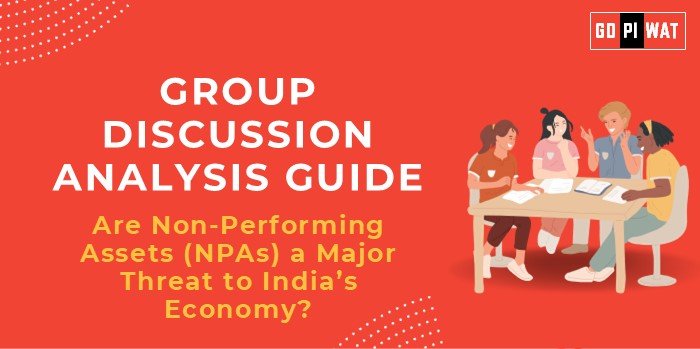📋 Are Non-Performing Assets (NPAs) a Major Threat to India’s Economy?
🌐 Introduction to Non-Performing Assets (NPAs)
Non-Performing Assets (NPAs) have been a persistent concern for India’s banking sector, influencing the nation’s economic stability and growth. The effective management of NPAs is crucial for maintaining financial health and fostering sustainable development.
NPAs are loans or advances where the borrower defaults on repayment for a specified period, typically 90 days or more. High levels of NPAs can erode bank profitability, restrict credit availability, and impede economic progress. India has implemented various measures, including the Insolvency and Bankruptcy Code (IBC) of 2016, to address this issue.
📊 Quick Facts and Key Statistics
🗓️ Gross NPAs of Scheduled Commercial Banks (SCBs): Stood at 2.8% as of March 2024, marking a multi-year low.
💰 Net NPAs of SCBs: Reduced to 0.6% by March 2024, indicating improved asset quality.
💵 Recovery through IBC: Creditors recovered approximately ₹3.4 lakh crore by June 2024, translating to a 32% recovery rate against total admitted claims.
📑 Resolution Plans Approved: A record 269 cases received approval in fiscal year 2024, a 42% increase from the previous year.
🌍 Global Comparison: India’s NPA ratio has improved significantly, aligning more closely with global standards.
🤝 Stakeholders and Their Roles
- 🛡️ Government of India: Implements policy reforms, such as bank recapitalization and strengthening recovery mechanisms.
- 📊 Reserve Bank of India (RBI): Regulates banking norms and oversees financial stability.
- 🏦 Banks and Financial Institutions: Manage asset resolution and risk assessment.
- 📉 Borrowers and Corporates: Entities facing financial distress or operational challenges.
- ⚖️ Judiciary (NCLT): Facilitates insolvency proceedings under the IBC framework.
🏆 Achievements and Challenges
🎯 Achievements:
- 📉 Reduction in NPA Ratios: Gross NPAs declined to 2.8% by March 2024, reflecting improved asset quality.
- ✅ Effective Implementation of IBC: Increased number of resolution plans approved, enhancing recovery rates.
- 📈 Strengthened Banking Sector: Improved profitability and capital adequacy ratios among banks.
⚠️ Challenges:
- ⏳ Delayed Resolution Processes: Prolonged cases in NCLT affecting timely recoveries.
- 🏗️ Sectoral Concentration: High NPAs in specific industries like real estate and manufacturing.
- 📉 Emerging Stressed Assets: Potential rise in NPAs due to economic uncertainties.
🌍 Global Comparisons
🌏 China: Utilizes state intervention for NPA resolution.
🇺🇸 United States: Implemented the Troubled Asset Relief Program (TARP) post-2008 crisis.
📚 Case Studies
🏗️ Real Estate Sector: Creditors recovered ₹3.4 lakh crore by June 2024, indicating sector-specific challenges and recoveries.
💬 Structured Arguments for Discussion
💡 Supporting Stance: “High NPAs constrain banks’ lending capabilities, hindering economic growth and increasing fiscal burdens.”
💡 Opposing Stance: “Recent reforms have significantly reduced NPAs, mitigating their threat to the economy.”
💡 Balanced Perspective: “While NPAs have declined, continuous monitoring and effective resolution mechanisms are essential to prevent future economic risks.”
🧠 Effective Discussion Approaches
- 📊 Data-Driven Start: “With gross NPAs at a multi-year low of 2.8%, India’s banking sector shows signs of recovery.”
- 🔄 Comparative Approach: “Unlike China’s state-driven NPA resolution, India employs market-based mechanisms like the IBC.”
- ⚙️ Reform Focus: “The Insolvency and Bankruptcy Code has transformed India’s approach to handling distressed assets.”
💬 Counter-Argument Handling: “Despite improvements, challenges like delayed NCLT proceedings and sector-specific NPAs persist, necessitating ongoing reforms.”
📊 Strategic Analysis of Strengths and Weaknesses (SWOT)
- 💪 Strengths: Robust regulatory framework and successful implementation of the IBC.
- 🔻 Weaknesses: Delays in judicial processes and high NPAs in certain sectors.
- ✨ Opportunities: Leveraging technology for early detection and enhancing private sector participation in asset reconstruction.
- ⚠️ Threats: Global economic downturns and the emergence of new stressed assets.
🎓 Connecting with B-School Applications
- 📘 Real-World Applications: Relevant for projects on financial risk management, banking reforms, and economic policy analysis.
- 💬 Sample Interview Questions:
- 📝 “How has the IBC impacted NPA resolution in India?”
- 📝 “What measures can banks take to prevent the accumulation of NPAs?”
- 💡 Insights for B-School Students: Understanding NPA dynamics is crucial for roles in finance, risk assessment, and policy development.


